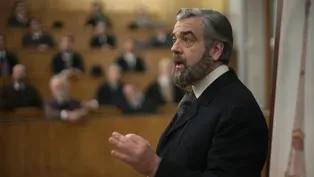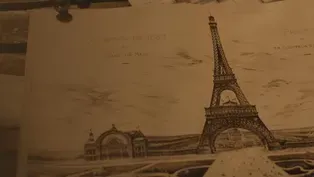
A Revolutionary Use of Iron
Clip: Season 21 Episode 1 | 1m 26sVideo has Closed Captions
Eiffel’s use of iron to build his tower represented a radical architectural shift.
The designs for the competing tower projects represented to different visions for the future: On one side, tradition, as embodied by Jules Bourdais’s stone tower in the academic style as taught at the Beaux-Arts. And on the other side, innovation, exemplified by Gustave Eiffel’s tower that used iron as not just a structural element, but as the central aesthetic.
Problems with Closed Captions? Closed Captioning Feedback
Problems with Closed Captions? Closed Captioning Feedback
SECRETS OF THE DEAD is made possible, in part, by public television viewers.

A Revolutionary Use of Iron
Clip: Season 21 Episode 1 | 1m 26sVideo has Closed Captions
The designs for the competing tower projects represented to different visions for the future: On one side, tradition, as embodied by Jules Bourdais’s stone tower in the academic style as taught at the Beaux-Arts. And on the other side, innovation, exemplified by Gustave Eiffel’s tower that used iron as not just a structural element, but as the central aesthetic.
Problems with Closed Captions? Closed Captioning Feedback
How to Watch Secrets of the Dead
Secrets of the Dead is available to stream on pbs.org and the free PBS App, available on iPhone, Apple TV, Android TV, Android smartphones, Amazon Fire TV, Amazon Fire Tablet, Roku, Samsung Smart TV, and Vizio.
Buy Now

Providing Support for PBS.org
Learn Moreabout PBS online sponsorshipThe two-tower war between Bourdais and Eiffel was taking shape.
And soon, the competition captivated the citizens of Paris.
The designs themselves represented two very different visions for the future: On one side, tradition.
And on the other, innovation.
Bourdais's tower, built of stone and with colonnades, reflected the academic approach as taught at the Beaux-Arts.
While Eiffel's tower was first and foremost an engineering project.
Its construction was dictated by mathematics and the need to produce a wind-resistant structure.
And it would be built from material that had never been used for a prestigious building.
-The controversy about the Eiffel Tower, at the time, was not that it was made of iron.
There was plenty of iron around.
It was that the iron was shown off as a decoration for the city, that the iron was the aesthetic of the building.
-The idea was that metal was good for useful things such as interior structures in churches, but also passageways, in banks, in halls, in railway stations, etc.
But that we didn't need to show it, unless it was really necessary.
-And the Eiffel Tower announces, iron, in a certain sense, has the right to be monumentally present in this city.
Video has Closed Captions
Gustave Eiffel had a lengthy résumé before he built his namesake tower. (1m 34s)
Preview | Eiffel's Race to the Top
Video has Closed Captions
Discover the untold story of Paris’ most famous landmark and the race to top 1,000 feet. (32s)
Providing Support for PBS.org
Learn Moreabout PBS online sponsorshipSupport for PBS provided by:
SECRETS OF THE DEAD is made possible, in part, by public television viewers.













